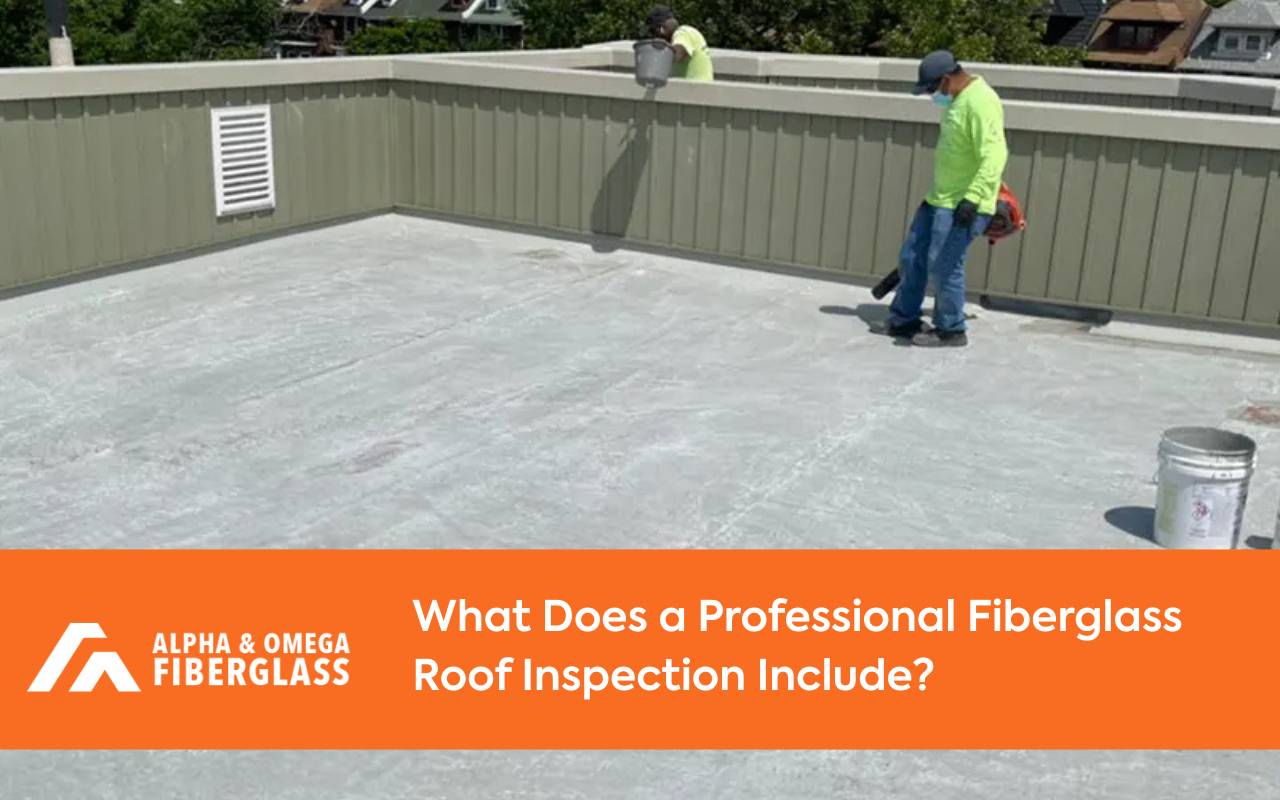
What Does a Professional Fiberglass Roof Inspection Include?
A Fiberglass Roof Inspection verifies current condition and risks. It documents defects and moisture. It also supports budget planning. Trusted contractors like Alpha & Omega Fiberglass use a clear process. Findings guide repairs and maintenance. You also receive photos and readings. That evidence helps prioritize work and timelines.
Importance of Fiberglass Roof Inspections
A scheduled Fiberglass Roof Inspection prevents surprise leaks and downtime. Inspectors check cracks, blisters, and punctures. They review seams and flashings. UV and thermal cycling can embrittle surfaces. Early fixes reduce repair costs and disruption.
Catch small issues before they spread.
Protect interiors, insulation, and equipment.
Support insurance and safety compliance.
Tools Used in a Professional Fiberglass Roof Inspection
Inspectors bring basics and diagnostics. Ladders and harnesses ensure safe access. Tape measures and flashlights support close review. Infrared scans reveal heat anomalies. A moisture meter identifies hidden wet zones.
Core sampling tools for deeper verification.
Handheld cameras to build a photo log.
Marked roof plans to map findings.
These tools make each Fiberglass Roof Inspection consistent and repeatable. Results are easy to compare across seasons.
Role of Moisture Meters in Detecting Water Damage
A calibrated moisture meter measures dampness below the surface. Inspectors follow a grid for reliable coverage. Elevated readings trigger targeted probes. Data reveals patterns of trapped water. That information supports durable repairs.
Moisture maps also validate dry-out success. They reduce guesswork after fixes. This step strengthens your Fiberglass Roof Inspection report.
Significance of Core Cuts in Assessing Roof Layers
Core cuts (when/why) confirm what instruments suggest. Small plugs expose layers, adhesion, and wet insulation. Inspectors use them when readings are ambiguous. Samples show rot, voids, or delamination. Findings direct precise scope.
Documented cores add certainty to a Fiberglass Roof Inspection. They focus budgets on the real problems.
Creating a Photo Log for Documentation Purposes
A structured photo log records every defect. Images are dated and located on the roof plan. You can compare changes over time. Photos also support bids and insurance. Visuals align teams and decisions.
See system context on the Fiberglass Roof page. It helps everyone speak the same language.
Differentiating Between Capital and Operational Expenses
Financial choices flow from evidence. Use CAPEX vs OPEX to frame action. Coatings or structural upgrades are typically CAPEX. Patching or seasonal cleaning is OPEX. Core results and meter data inform that split.
This clarity turns a Fiberglass Roof Inspection into a budgeting tool. It aligns timing, taxes, and performance goals.
How Inspections Provide Peace of Mind
Clear reports reduce uncertainty. You see defects, locations, and severity. Moisture maps and cores explain causes. Planned work becomes predictable. Stakeholders trust the process.
Making Informed Decisions Based on Inspection Findings
Combine photos, readings, and cores to set scope. Minor issues get patches. Deeper failures need systemic fixes. Compare contractor proposals to the evidence. Choose methods that extend service life.
Benefits of Regular Fiberglass Roof Inspections
Routine checks extend roof life. They protect energy performance and interiors. Emergencies become rare. Operations continue without leaks.
Lower life-cycle cost through timely action.
Better scheduling with seasonal insights.
Stronger warranties through documentation.
Frequently Asked Questions
How often should I schedule a fiberglass roof inspection?
Schedule at least annually, plus after major weather events. Aging roofs may need semiannual checks.
When are core cuts necessary during an inspection?
Use cores when instrument data is unclear, or when delamination and trapped moisture are suspected.
What does a photo log include?
It includes dated images, mapped locations, and short notes. This helps compare trends and plan work.
How do moisture meter readings guide repairs?
Readings highlight wet zones and boundaries. They target tear-out, drying, or coating areas precisely.
Is repair a CAPEX or an OPEX decision?
Scope determines classification. System upgrades trend CAPEX; minor patches and cleaning trend OPEX.
Ensuring Longevity and Integrity of Your Property
Partner with Alpha & Omega Fiberglass for a thorough Fiberglass Roof Inspection. Use meters, core cuts (when/why), and a strong photo log. Align CAPEX vs OPEX with evidence. Ready to begin? Contact Us to schedule your evaluation.